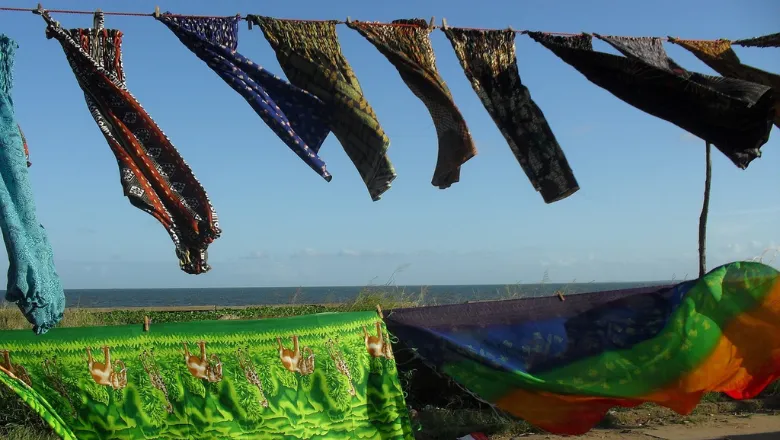Researchers from King's and Northumbria University found that microfibres released from washing clothes may pose problems for East African ecosystems

Washing clothes releases microfibres, which can be synthetic (plastic) and non-synthetic, but little is understood about the environmental impact. To better understand this, researchers teamed up with the Flipflopi project, an initiative which uses the world's first recycled plastic sailing dhow, a handmade boat constructed from materials found on African beaches, including 30,000 discarded flip flops. To date, the seven-tonne boat has received more than 90,000 kg of plastics from the world's oceans.
Researchers examined over 2400 microfibres in water samples taken from 37 sites along the Kenyan and Tanzanian coastlines. Over half of the samples contained natural microfibres from wool, cotton, silk, vegetables and minerals.
Dr Matteo Gallidabino, Lecturer in Forensic Chemistry at the Faculty of Life Sciences & Medicine, said: "The study shows the presence of textile fibres in every sample collected, from a minimum of about one fibre per Litre up to a maximum of about 60 fibres per Litre. These are considerable numbers. Indeed, if we multiply these values for the total volume of water in our oceans, we easily realise that the level of maritime pollution due to the garment industry is potentially huge, even after the necessary corrections to take into account depth and location."
"This is a kind of pollution that everybody irremediably contributes to, willing or not. It is not something that can be avoided easily. We all need to use garments in our daily life and some of the textile fibres they are made of can find their way into the environment, meaning that each of us is an integral part of the pollution chain by simply living our life."– Dr Matteo Gallidabino, Lecturer in Forensic Chemistry at the Faculty of Life Sciences & Medicine
The wastewater from washing machines and hand washing clothes have also contributed to the presence of microfibres into the ocean. Washing machines play a part but it has been estimated that less than a quarter of the households in Kenya use these, and many instead wash clothes by hand, dumping the wastewater onto the ground. What isn't absorbed by the soil runs off into the water, polluting the ocean.
Dr Matteo Gallidabino added: "We need to increase awareness on the environmental impact of the textile industry. Even if the clothes we wear are composed by natural materials, such as cotton or wool, some of the textile fibres they are made of can find their way into the environment and, potentially, accumulate into living organisms. These may be very harmful and have significant effects on the biodiversity."
The study found that many of these fibres are in colourful shades like red and green, which to fish, appear as the algae found on the coast of Kenya. As these microfibres can carry pathogens, the presence of these fibres in the ocean pose an extra hazard to fish.
"Textile fibres, commonly referred to as microfibres, and their prevalence in the environment have been studied by forensic scientists for decades. However, the majority of recent environmental studies have overlooked that knowledge and focused only on the characterisation of microplastic fibres. This has led to inaccurate microfibre data and much misunderstanding in the literature, culminating in a general underestimation of the threat posed by natural fibres." – Dr Kelly Sheridan, Assistant Professor of Forensic Science at Northumbria University
This research, 'Prevalence and characterisation of microfibres along the Kenyan and Tanzanian coast' has been published by Frontiers in Ecology and Evolution.






